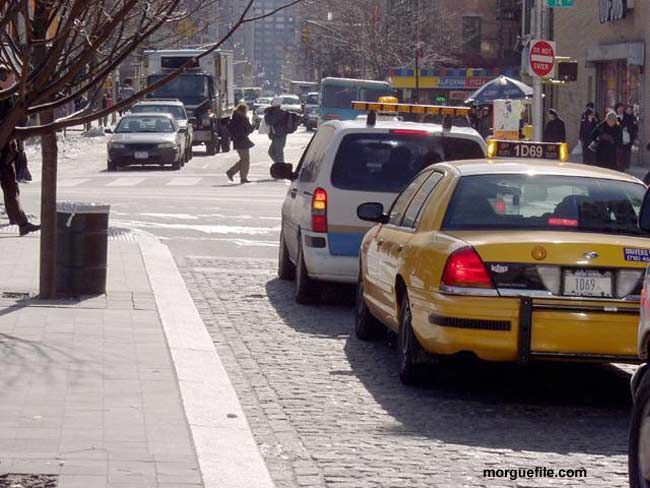Less Pollution on City Sidewalks than Streets

Passengers in taxis, buses, and cars all inhale substantially more pollution than cyclists and pedestrians, a new study shows.
Researchers measured levels of ultrafine, traffic-produced pollution particles on busy London streets using a newly developed particle counter fitted with a video recorder.
The equipment allowed them to match particle levels with each of the five modes of transport. They also could identify what activities and behaviors lead to the highest exposures.
The results
On average, taxi passengers were exposed to more than 100,000 ultrafine particle counts per cubic centimeter. Bus travelers were exposed to just under 100,000 and people in cars about 40,000.
Pedestrians and bicyclists, meanwhile, were exposed to counts of just 5,000 and 8,000, respectively.
Ultrafine particles are so small that large amounts can be inhaled in a single breath, after which they can settle in the lungs and damage cells.
Sign up for the Live Science daily newsletter now
Get the world’s most fascinating discoveries delivered straight to your inbox.
Would the results hold true in New York City or elsewhere?
"[We] generally found that the trends such as pedestrians having the lowest exposures and the in-vehicle exposures being much higher to be common across different countries," study co-author Surbjit Kaur of Imperial College London told LiveScience. "However, the concentrations do vary due to different local conditions, such as traffic, meteorology, building layout, and configuration."
Why the difference?
People sitting in a vehicle in the middle of heavy traffic are directly in the path of the pollutant source—other vehicle's mufflers. Pollution in cars is less than in other vehicles most likely because cars generally spend less time in traffic than taxis and buses. Also, private cars tend to be cleaner to begin with.
Bikers stick mostly to the outer edges of the street, where pollution levels are lower. People on the sidewalk are even further away.
So where's the best place to walk in a busy city?
Kaur suggests staying closer to the buildings, where you'll be exposed to approximately 10 percent less pollution than curbside.
The research is detailed in the January issue of the journal Atmospheric Environment.
- Tailpipe Test: Study Finds Worst Polluters
- Children on School Buses Breathe More Pollution
- Dairy Air: Scientists Measure Cow Gas
- U.S. Pollution Drops












